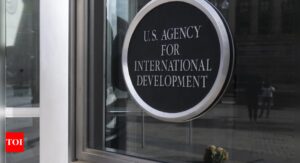WSJ News Exclusive | Redwood Materials Plans $3.5 Billion Battery-Materials Plant in Nevada

The company run by
Tesla Inc.’s
former chief technology officer plans to spend $3.5 billion on a battery-materials factory in northwest Nevada, a bet that electric-vehicle demand is only starting to take off.
The Redwood Materials Inc. plant under construction outside Reno, Nev., is expected to be one of the first U.S. facilities to produce key ingredients needed to make the batteries that power electric vehicles.
The investment comes as manufacturers work to satisfy burgeoning consumer interest in battery-powered cars. Over the past two years, companies from
General Motors Co.
to South Korean battery maker
SK Innovation Co.
Ltd. have announced more than $30 billion of investments in U.S. battery-cell making and related efforts, according to the Center for Automotive Research.
But the U.S. has little role in producing the raw and intermediate materials needed to make those battery cells. Even domestically mined lithium, for example, likely would need to be shipped to China or elsewhere in Asia before making its way into a battery cell. Such dependence threatens to derail American efforts to make electric vehicles and their batteries domestically, lawmakers and industry executives say.

Redwood Materials chief executive JB Straubel aims to make key lithium-ion battery-cell components domestically.
Photo:
Max Whittaker for The Wall Street Journal
JB Straubel, who left Tesla in 2019 and runs Redwood, wants to simplify that supply chain by making what is generally the most expensive component of lithium-ion battery cells—cathode material—in the U.S. The black powder is used in rechargeable batteries to help circulate lithium ions to generate electric current. Inputs often include lithium, nickel and cobalt.
“Demand has skyrocketed, and now everyone’s building battery factories and EVs,” Mr. Straubel said in a recent interview. “The beginning of the supply chain didn’t keep up.”
Today, China makes around 80% of the world’s cathode material and more than 90% of its anode material, according to Benchmark Mineral Intelligence, meaning most of the key ingredients used in electric-vehicle batteries must pass through the country before being assembled into a battery cell.
That has sparked concern among executives and the Biden administration, which invoked the Defense Production Act earlier this year to boost U.S. production of the materials used in lithium-ion batteries and reduce American reliance on China.
The U.S. Energy Department said Monday it would loan a GM joint venture $2.5 billion to fund the construction of three battery-cell factories.
Earlier this month, Tesla Chief Executive
described lithium-ion batteries as the “new oil.”
“The more complex the system is, the more fragile it can be,” said Margaret Mann, who leads the National Renewable Energy Laboratory’s transportation infrastructure analysis group.

Redwood Materials employees monitoring a furnace the company used in 2020 at its pilot facility that melted down batteries for recycling.
Photo:
Max Whittaker for The Wall Street Journal
Redwood, formed in 2017 while Mr. Straubel was still at Tesla, broke ground on a roughly 175-acre site in December where it aims to begin producing cathode materials by the end of 2024.
Redwood also is gearing up to produce reams of the thin copper foil that typically serves as the skeleton for a lithium-ion battery’s anode. Come 2025, the company said it expects to be producing enough cathode materials and copper foil to support roughly one million electric vehicles annually, or about the number of cars Tesla produced last year.
Redwood, valued at around $3.8 billion as of last year, according to PitchBook, got its start recycling batteries pried from old laptops and power tools, as well as scrap material generated by battery-cell makers such as
Panasonic Corp.
, a major Tesla supplier. The company takes in more than 20,000 metric tons of lithium-ion batteries a year, reducing them to various powders and other products, from stark white lithium carbonate and black nickel concentrate, to a teal mixture composed partly of cobalt. It now intends to give those ingredients a second life in its cathode materials and copper foil.

Redwood Materials takes in more than 20,000 metric tons of lithium-ion batteries a year, reducing them to various powders.
Photo:
Max Whittaker for The Wall Street Journal
Mr. Straubel expects to be able to source around 30% or more of the lithium and nickel and 100% of the cobalt Redwood needs to make cathode materials from the company’s growing recycling operation. It would buy newly mined materials to meet the rest of its requirements.
“I’m confident we can do this cheaper by keeping it close,” said Mr. Straubel, who worked at Tesla for roughly 15 years.
Panasonic, which has a battery-cell factory less than 10 miles from Redwood’s new factory site, is slated to be the company’s first copper-foil customer. The cell-maker said it plans to use Redwood’s foil, made entirely from recycled or scrap material, in its battery production by the end of the year.
“Localization is a big deal,” Bob Galyen, former chief technology officer of battery-maker
Contemporary Amperex Technology Co.
Ltd., said, adding that it can reduce logistics costs and uncertainty for cell makers.
Tesla has also taken steps to enter the cathode-making business as it seeks to get ahead of a possible shortfall of certain battery materials.
“If you were to say today what are concerns a few years down the road, I would say one of the concerns is the machinery to refine the critical ingredients of lithium-ion cells. So lithium itself and then the cathode,” Mr. Musk said on an earnings call last week. “If our suppliers don’t solve these problems, then we will.”
Batteries are the most expensive part of an electric vehicle, and producing them for less is widely seen as essential to making such cars available at a lower price point. The raw materials needed to make an electric vehicle in the U.S. cost around $8,255 per vehicle as of May, from roughly $3,384 two years earlier, according to consulting firm AlixPartners LLP. The raw inputs into gasoline-powered vehicles are less expensive and haven’t increased by as much, according to AlixPartners.
Electric-vehicle makers have passed on some of those costs to buyers, who paid an average of around $54,000 for such a vehicle in the U.S. in May, up 22% from a year earlier, according to J.D. Power.
Redwood expects to spend $3.5 billion over 10 years on its battery-materials campus, where employment could reach more than 1,500 full-time jobs in that time, a spokeswoman said. Seeing that plan through is likely to require additional financing from private investors and, potentially, federal funding, Mr. Straubel said.
—For more WSJ Technology analysis, reviews, advice and headlines, sign up for our weekly newsletter.
—Nora Eckert contributed to this article.
Corrections & Amplifications
Redwood Materials takes in more than 20,000 metric tons of lithium-ion batteries a year to be recycled. An earlier version of this article said the company takes in more than 20 metric tons of lithium-ion batteries a year. Separately, JB Straubel runs Redwood Materials. A summary of this article published elsewhere on WSJ.com incorrectly said his surname is Strobel. (Corrected on July 25)
Write to Rebecca Elliott at rebecca.elliott@wsj.com
Copyright ©2022 Dow Jones & Company, Inc. All Rights Reserved. 87990cbe856818d5eddac44c7b1cdeb8








